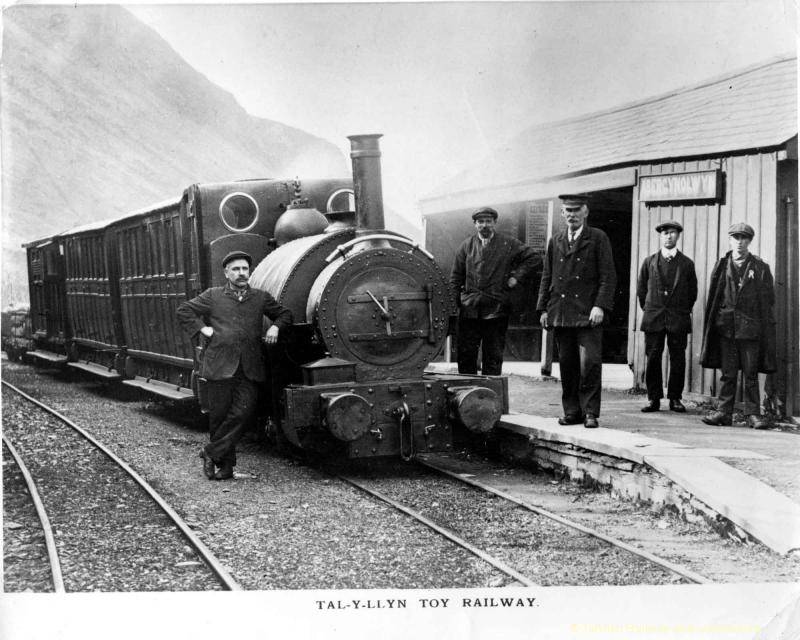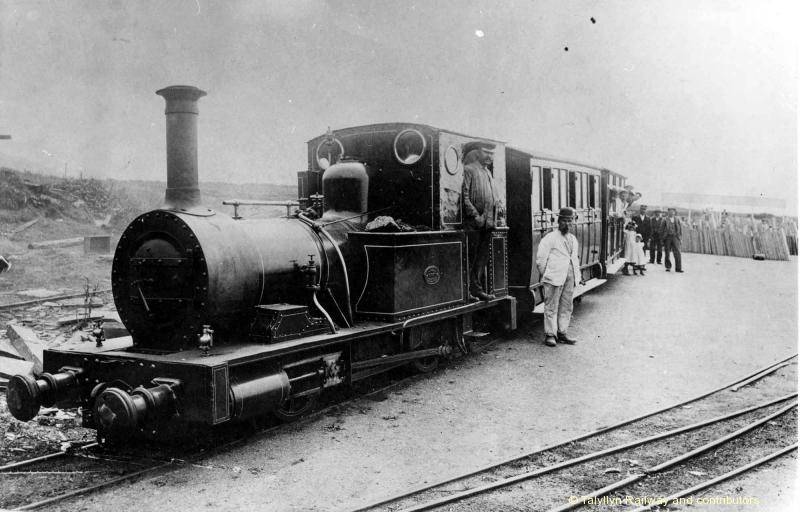Once construction of the line was complete, it was inspected by Captain Henry Tyler of the Board of Trade. His report was dated 25th September 1866. He was unhappy on a number of counts, particularly with the narrow width of the over-bridges which did not leave enough clearance either side of the carriage. This was overcome, resourcefully, by permanently fastening the doors on the south side, away from the platform, barring the windows, and slewing the track under the bridges. Today the bars have gone and it is unlikely that the tracks were slewed as they appear to have always been central under the bridges, but the carriages still only have doors on one side. Captain Tyler inspected the line a second time on 8th November and official blessing was given on the 11th for the railway to open to passengers. The exact date is not recorded, but the Merionethshire Standard and Mid-Wales Herald of 22nd December 1866 notes that the line has opened and a timetable for December issued.
The Talyllyn was unusual amongst the narrow gauge lines serving the slate industry in that it was owned by the only quarry it served but also ran a public passenger and freight service. There were several quarry owned lines but they were not public railways, and the public railways served several quarries and frequently had stormy relations with their customers.
The rolling stock consisted of two steam locomotives, both built by Fletcher Jennings of Whitehaven but of very different designs; four four-wheeled passenger carriages, three by Brown Marshalls and one by the Lancaster Carriage and Wagon Company; one guard’s van by Brown Marshalls; and a variety of wagons of various sorts (mainly slate wagons). This stock was to suffice until early 1951.

